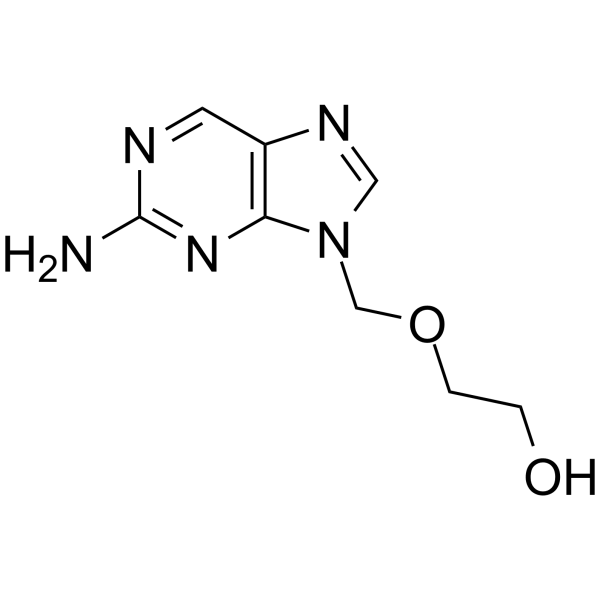452-06-2
| Name | 2-aminopurine |
|---|---|
| Synonyms |
2-Aminoperin
iso-Adenine 2-Aminopurine 3H-Purin-2-amine MFCD07357244 7H-Purin-2-amine 9H-Purin-2-amine 2-amino purine EINECS 207-197-4 9H-purin-2-ylamine 2-amino-6-purine 1H-Purin-2-amine 4-aminopurine 2-amino-purin SQ 22,451 |
| Description | 2-Aminopurine, a fluorescent analog of guanosine and adenosine, is a widely used fluorescence-decay-based probe of DNA structure. When 2-Aminopurine is inserted in anoligonucleotide, its fluorescence is highly quenched by stacking with the natural bases. 2-Aminopurine has been used to probe nucleic acid structure and dynamics[1][2]. |
|---|---|
| Related Catalog | |
| In Vitro | 2-Aminopurine (2AP) is not valuable as afluorescent label because its fluorescence is highly quenched by stacking with the natural bases, when it is inserted in anoligonucleotide. However, it is this very susceptibility to interbase quenching that makes 2AP an exquisitely sensitivefluorescent probe of nucleic acid structure[1]. 2-Aminopurine differs from adenine (6-aminopurine) only in the position of the exocyclic amine group, and yet its fluorescence intensity is one thousand times that of adenine[1]. |
| References |
| Density | 1.9±0.1 g/cm3 |
|---|---|
| Boiling Point | 328.2±25.0 °C at 760 mmHg |
| Melting Point | 280-282 °C(lit.) |
| Molecular Formula | C5H5N5 |
| Molecular Weight | 135.127 |
| Flash Point | 152.3±23.2 °C |
| Exact Mass | 135.054489 |
| PSA | 80.48000 |
| LogP | -1.33 |
| Vapour Pressure | 0.0±0.7 mmHg at 25°C |
| Index of Refraction | 1.954 |
CHEMICAL IDENTIFICATION
HEALTH HAZARD DATAACUTE TOXICITY DATA
MUTATION DATA
|
| Symbol |

GHS07 |
|---|---|
| Signal Word | Warning |
| Hazard Statements | H302 |
| Precautionary Statements | P301 + P312 + P330 |
| Personal Protective Equipment | dust mask type N95 (US);Eyeshields;Gloves |
| Hazard Codes | Xn:Harmful; |
| Risk Phrases | R22 |
| Safety Phrases | S22-S36 |
| RIDADR | NONH for all modes of transport |
| WGK Germany | 3 |
| RTECS | UO7475000 |
| HS Code | 2933990090 |
|
~85% 
452-06-2 |
| Literature: Kusmierek, Jaroslaw; Czochralska, Barbara; Johansson, Nils Gunnar; Shugar, David Acta Chemica Scandinavica, Series B: Organic Chemistry and Biochemistry, 1987 , vol. 41, # 10 p. 701 - 707 |
|
~48% 
452-06-2 |
| Literature: Goto; Toya; Ohgi; Kondo Tetrahedron Letters, 1982 , vol. 23, # 12 p. 1271 - 1274 |
|
~90% 
452-06-2 |
| Literature: Kos, Nico J.; Plas, Henk C. van der Journal of Organic Chemistry, 1980 , vol. 45, # 15 p. 2942 - 2945 |
|
~% 
452-06-2 |
| Literature: Anufriev, M. A.; Ratsino, E. V.; Elagin, L. M.; Sokolov, L. B.; Komarov, E. V. J. Gen. Chem. USSR (Engl. Transl.), 1982 , vol. 52, # 5 p. 1015 - 1019,884 - 887 |
|
~% 
452-06-2 |
| Literature: Saladino, Raffaele; Botta, Giorgia; Delfino, Michela; Di Mauro, Ernesto Chemistry - A European Journal, 2013 , vol. 19, # 50 p. 16916 - 16922 |
|
~59% 
452-06-2 |
| Literature: Tisler, Miha; Stanovnik, Branko; Zrimsek, Zdenka Heterocycles, 1982 , vol. 17, p. 405 - 411 |
|
~% 
452-06-2 |
| Literature: Nair, Vasu; Buenger, Greg S. Journal of Organic Chemistry, 1990 , vol. 55, # 11 p. 3695 - 3697 |
|
~% 
452-06-2 |
| Literature: Ratsep, Peter C.; Pless, Reynaldo C. Journal of Organic Chemistry, 1988 , vol. 53, # 14 p. 3241 - 3246 |
| Precursor 8 | |
|---|---|
| DownStream 6 | |
| HS Code | 2933990090 |
|---|---|
| Summary | 2933990090. heterocyclic compounds with nitrogen hetero-atom(s) only. VAT:17.0%. Tax rebate rate:13.0%. . MFN tariff:6.5%. General tariff:20.0% |
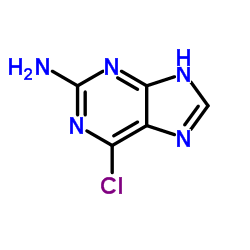
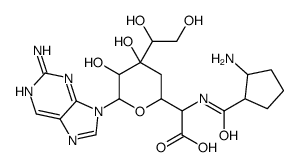



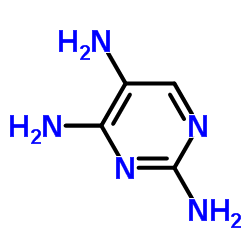

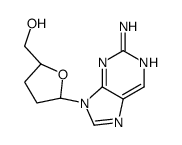

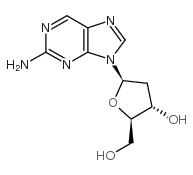

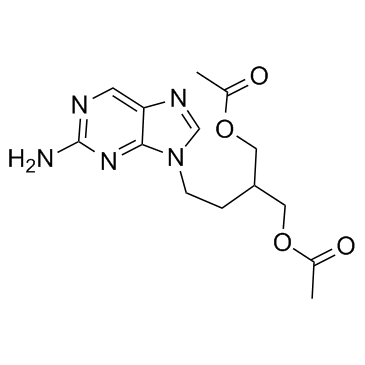
![2-[(2-aminopurin-7-yl)methoxy]ethanol structure](https://image.chemsrc.com/caspic/418/114810-83-2.png)
